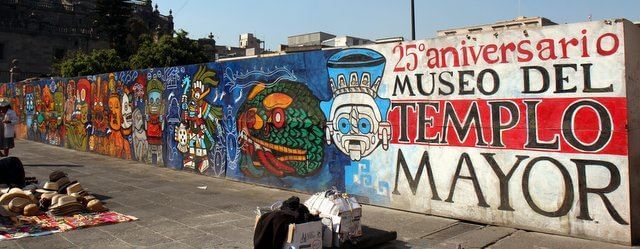
Mural outside Museo Del Templo Mayor
Our last last stop on a day sightseeing in Mexico City lay between two previous visits on the Zócalo – an alleyway round the side of the Catedral Metropolitano de la Asuncion de Maria leads to a ticket office for the Templo Mayor.
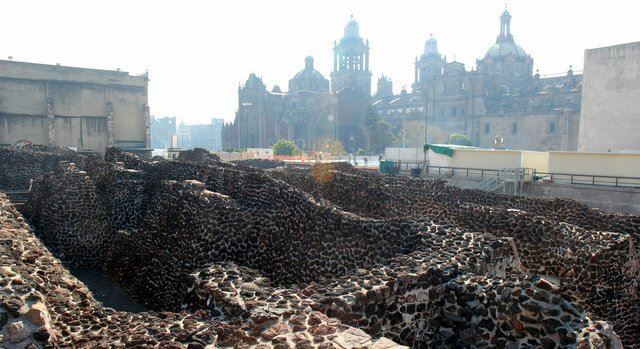
Looking back toward Catedral Metropolitano de la Asuncion de Maria
The 48 peso ticket price includes an audio tour, but neither of ours worked very well. There are signs all over the place vaguely explaining what you’re looking at so it’s not too great a concern.
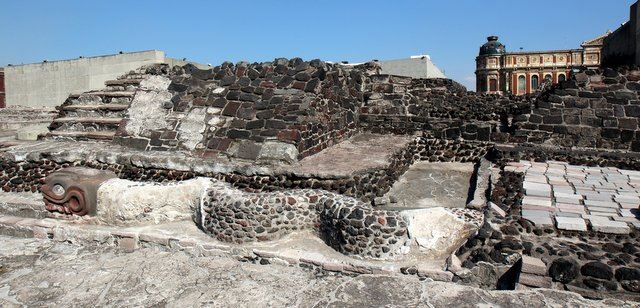
Inside Templo Mayor
The Templo Mayor is the site of the main Aztec temple of Tenochtitlan. It was destroyed by the Spanish in 1521, who replaced it with the Catedral Metropolitano de la Asuncion de Maria. They had intended to build over the top, but missed slightly. A further five centuries of buildings came and went over the Aztec site until it was rediscovered in 1978. Excavations revealed 6 smaller temples, predating the main site and the various layers can be seen as visitors walk through the site.
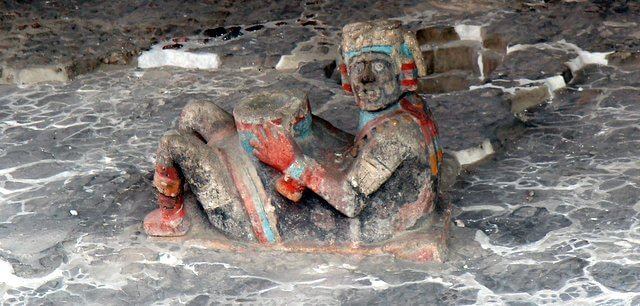
Unearthed Statue
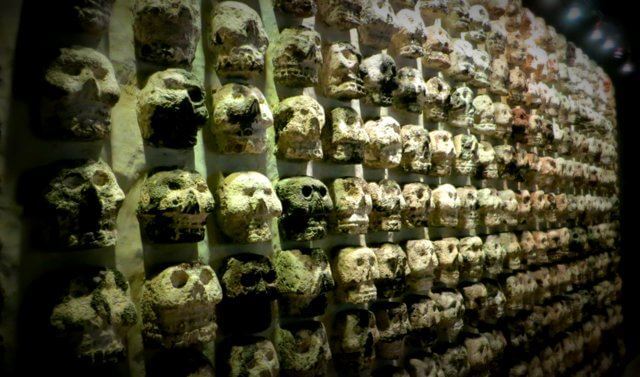
An eye-catching wall of skulls greets visitors as they walk into the Museo del Templo Mayor
Museo del Templo Mayor
At the end is the Museo del Templo Mayor, a modern building housing the ancient artifacts. The centre-piece is arguably a large stone disc depicting the goddess Coyolxauhqui – the first artefact to be found in 1978.
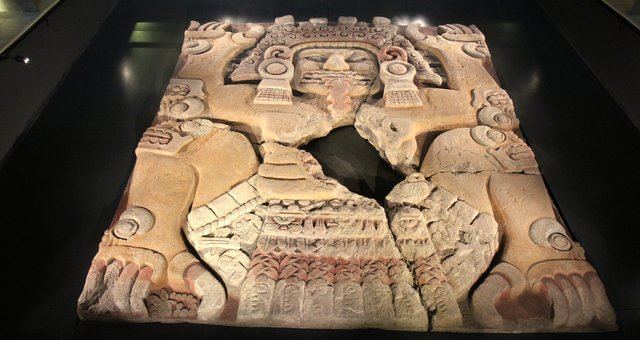
Twelve-ton stone featuring Tlaltecuhti, the male earth god
The museum is excellent, but the outside area feels almost lost beyond repair – much of the site appears damaged, especially where a large water drain cuts through the width of the site. I’d guess that to restore the temples would be to replace them entirely, leaving little of the original material.
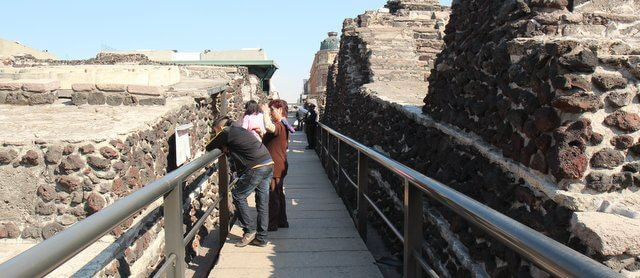
Walkway hiding the drainage pipe running right through the middle of the Templo Mayor
Once inside there’s far more to look at – colourful pottery and walls full of skulls vie for attention with model recreations of the temples and the Aztec way of life.
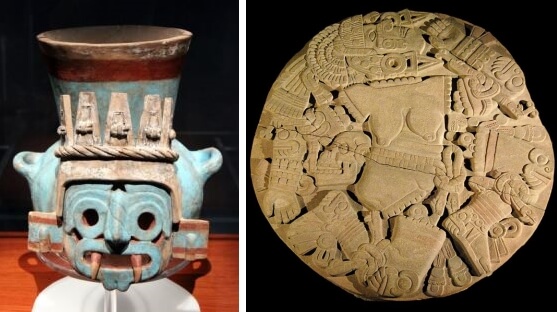
Stone disc featuring Coyolxauhqui
The main exhibit is a large stone disc, featuring a dismembered Coyolxauhqui. This was the first piece found and led to the uncovering of the rest of Templo Mayor.

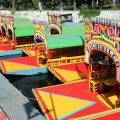





Pingback: @MexicoMoment